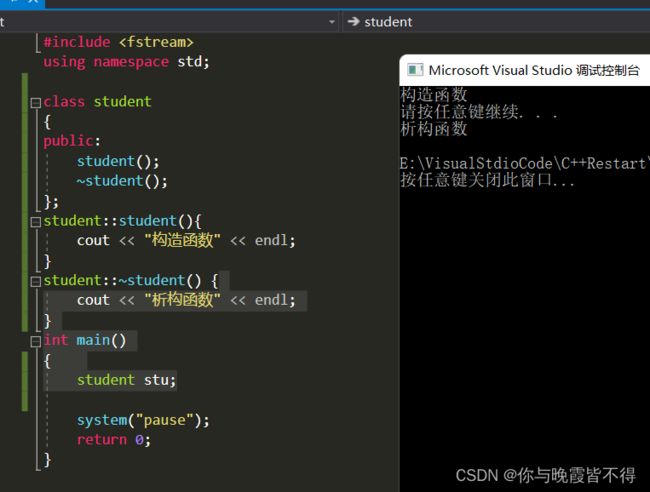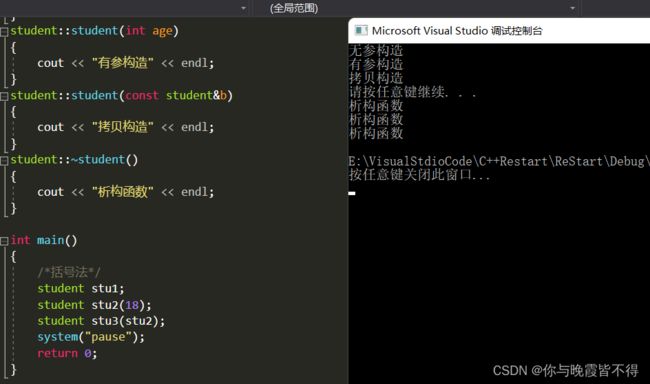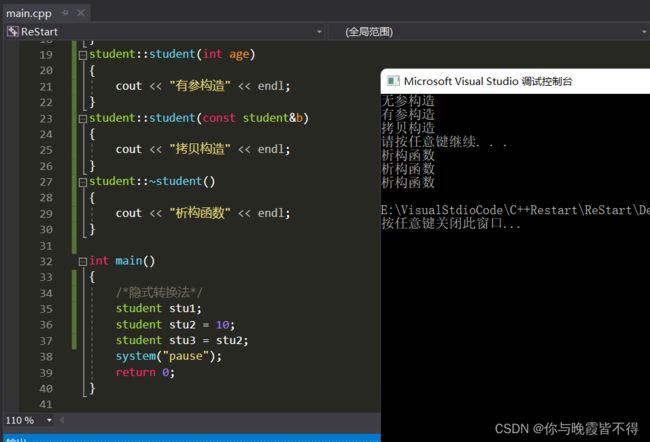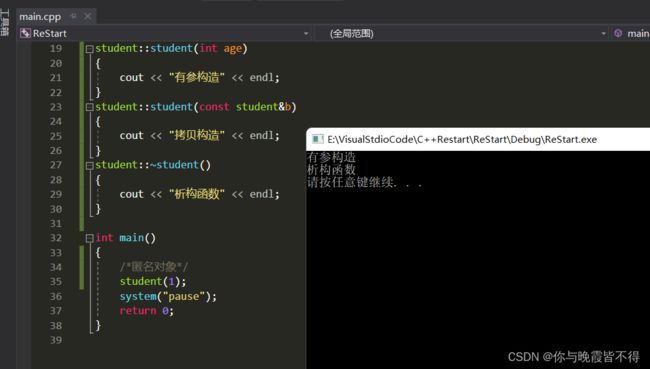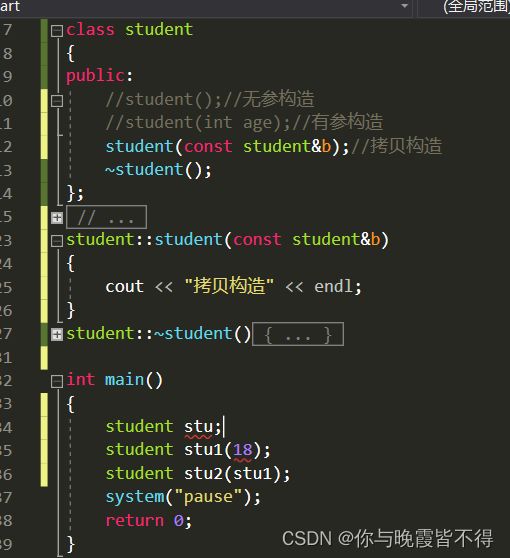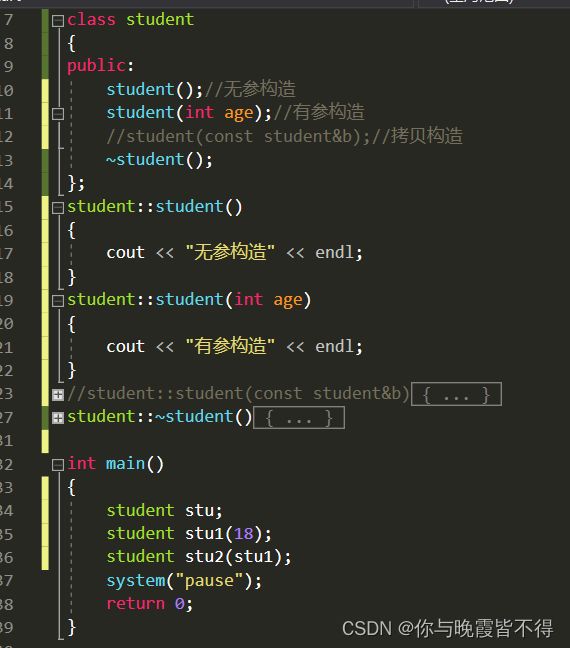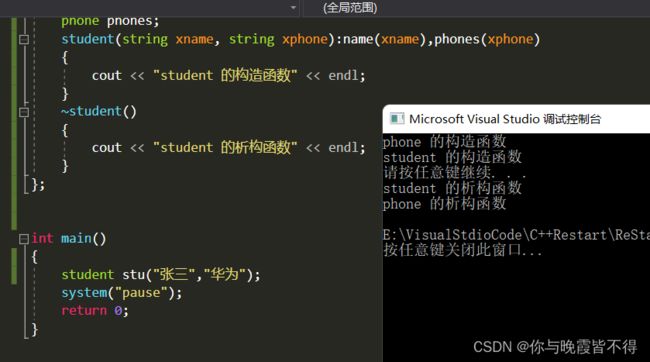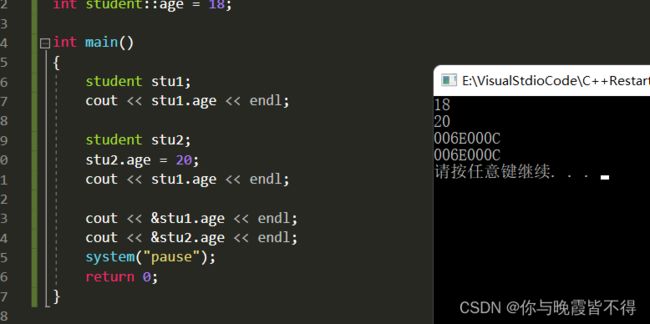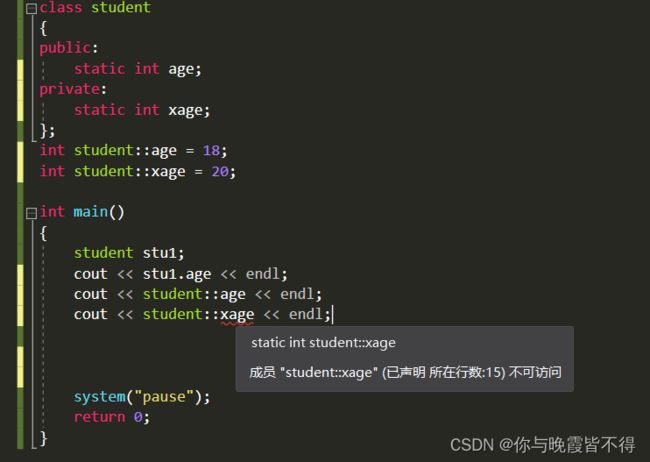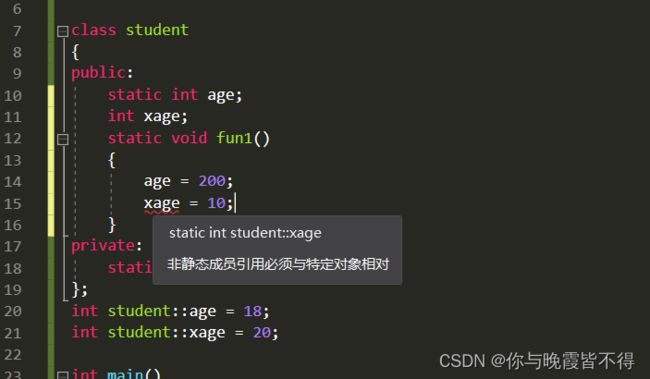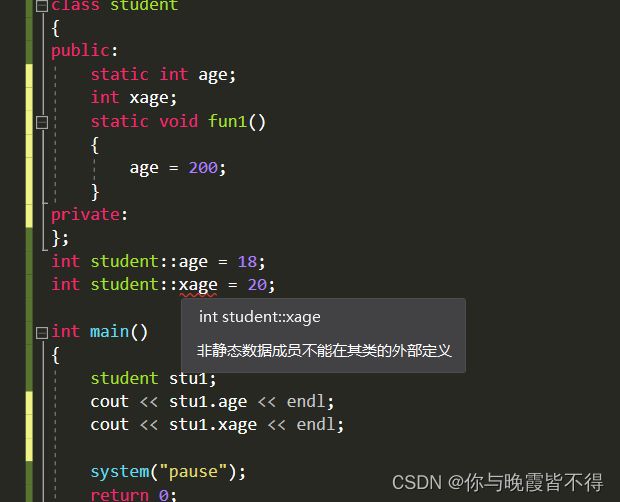C++:构造函数以及析构函数
构造函数以及析构函数
- 对象初始化和清理
- 构造函数以及析构函数
- 构造函数的分类
-
- 括号法
- 显示法
- 隐式转换法
- 匿名对象
- 拷贝构造函数的调用时机
- 构造函数的调用规则
- 深拷贝和浅拷贝
- 初始化列表
- 类对象作为类成员
- 静态成员
对象初始化和清理
C++面向对象来源于生活,每个对象都会有初始化设置以及对象销毁前的清理数据的设置
构造函数以及析构函数
对象的初始化和清理是非常重要的安全问题
- 一个对象或者变量没有初始化状态,对其使用后果也是未知
- 使用完一个对象或者变量,没有及时清理,也会造成一定的安全问题
构造函数主要用于创造对象时为对象的成员属性赋值,构造函数由编译器自动调用,无需手动调用
析构函数主要用于销毁前系统自动调用,执行一些清理工作
构造函数语法:类名()
- 构造函数 没有返回值 也不写void
- 函数名称和类名相同
- 构造函数可以有参数,因此可以发生重载
- 程序在调用对象时自动调用构造函数,无需手动调用,且只会调用一次
析构函数语法:~类名()
- 析构函数,没有返回值也不写void
- 函数名称是在类名前加~
- 析构函数不可以有参数 因此不能发生重载
- 程序在对象销毁时自动调用析构函数,无需手动调用,且只会调用一次
#include 构造函数的分类
两种分类方式:
- 按参数:有参构造和无参构造
- 按类型:普通构造和拷贝构造
三种调用方式:
- 括号法
- 显示法
- 隐式转换法
调用默认构造的时候不要写括号()系统会默认成是函数的
不要利用拷贝构造函数初始化匿名对象 编译器会认为 类名(p3) ==person p3
括号法
#include 显示法
#include 隐式转换法
#include 匿名对象
匿名对象的意思就是当执行结束后系统立马收回
#include 拷贝构造函数的调用时机
调用时机
- 使用一个已经穿件完毕的对象来初始化一个新的对象
- 以值传递的方式给函数参数传值
- 以值方式返回局部对象
#include 
上面的代码输出的地址也表示了 拷贝构造函数是拷贝一个新的构造函数,所以地址会不同
构造函数的调用规则
默认情况下,c++编译器至少给1个类添加3个函数
- 默认构造函数(无参,函数体为空)
- 默认析构函数(无参,函数体为空)
- 默认拷贝构造函数,对属性进行值拷贝
构造函数调用规则:
- 如果用户定义有参构造函数,c++不提供默认无参构造函数,但依然会提供默认拷贝构造
- 如果用户定义拷贝构造函数,c++不会再提供其他构造函数
下面几张截图就可以充分说明上述构造函数调用规则:
1. 只定义有参构造,声明无参构造会报错 声明拷贝构造不会报错
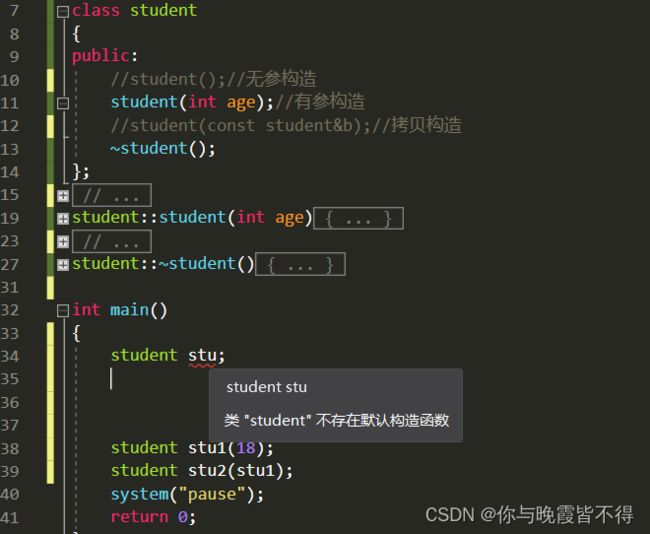
深拷贝和浅拷贝
浅拷贝:简单的赋值拷贝操作
深拷贝:在堆区重新申请空间,进行拷贝操作
先把代码放上来,然后说一下区别
#include 上面代码不可直接使用,在深拷贝和浅拷贝哪里应该要注释一个,现在我来贴出不同情况下运行后的结果
浅拷贝
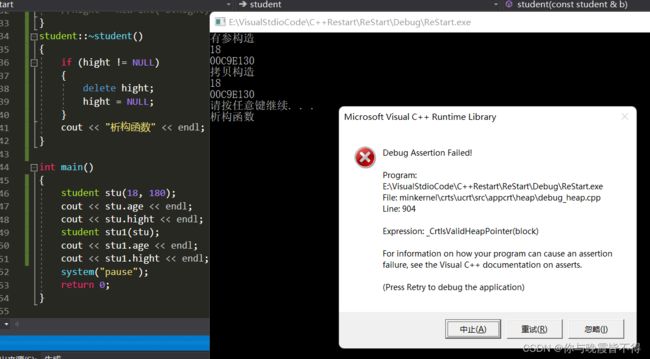
深拷贝
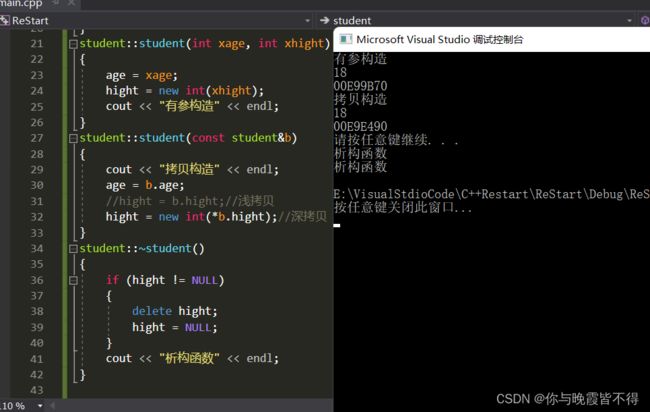
首先肯定的是,这个代码在浅拷贝的时候运行出错了。首先我们可以看到,拷贝之后的heigh的地址指向的是一样。那么在程序结束的时候,析构函数会delete这个指针,但是由于浅拷贝中hight中2个函数指向的地址一样,所以析构函数相当于delete一个相同的指针2次,那么必然会出错的。
深拷贝是自己在堆区重新开辟的一个新的空间,自然而然2个hight指向的地址不是一个,这个我们打印的结果也看到了,所以在析构函数释放的时候自然不会报错
初始化列表
前面我们写的代码中有参构造,都是在函数内部实现属性和形参的赋值
这个初始化列表作用就是C++提供了初始化列表语法,用来初始化属性
语法:槽函数():属性1(值1)属性2(值2)
传统方式
#include 初始化列表
#include 类对象作为类成员
C++中类的成员可以是另外一个类,我们称改成员为对象成员
当其他类对象作为本类成员,构造时候要先构造对象,在构造自身
析构函数刚好相反
#include 静态成员
静态成员就是在成员变量和成员函数前加关键字static
静态成员变量
- 所有对象共享一份数据
- 在编译阶段分配内存
#include 访问方式:
类内声明,类外初始化
#include 